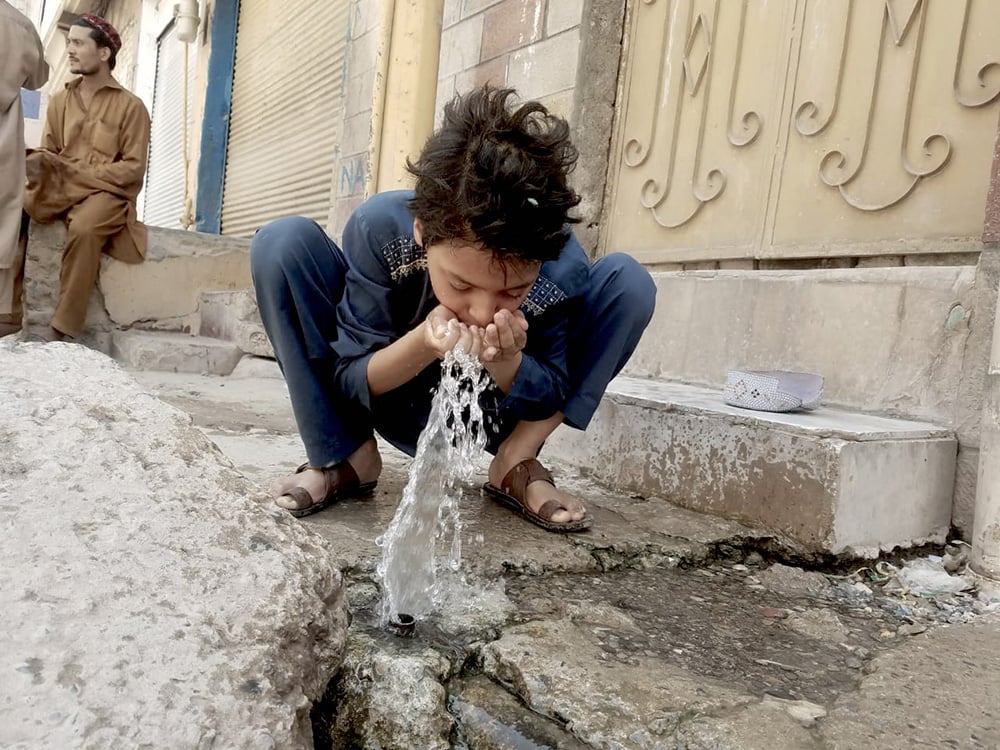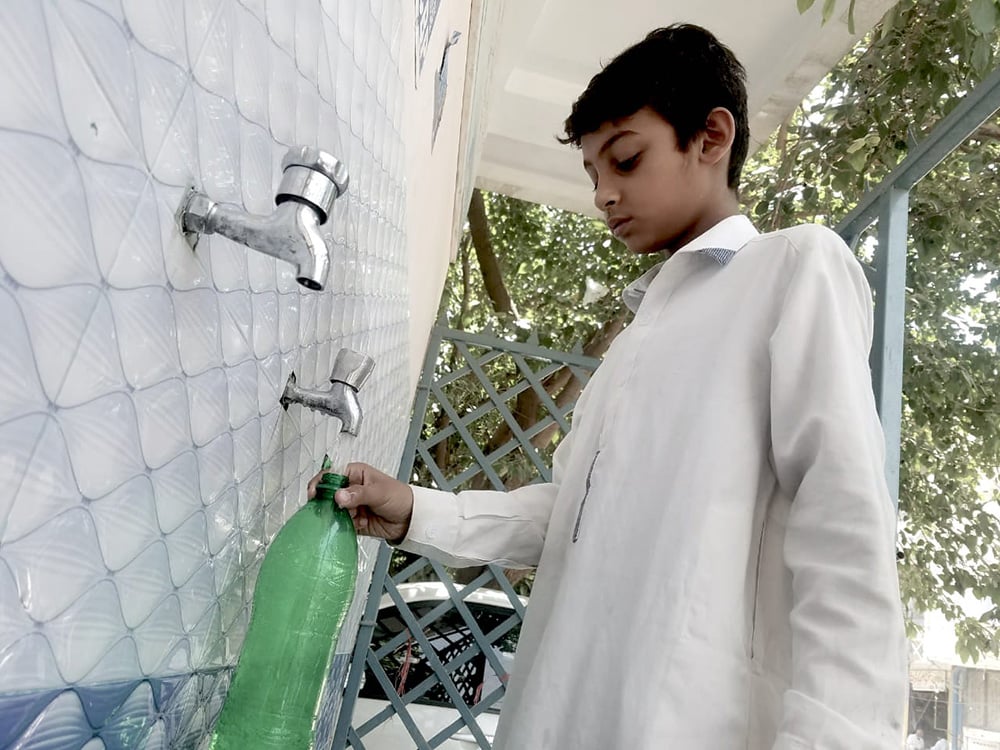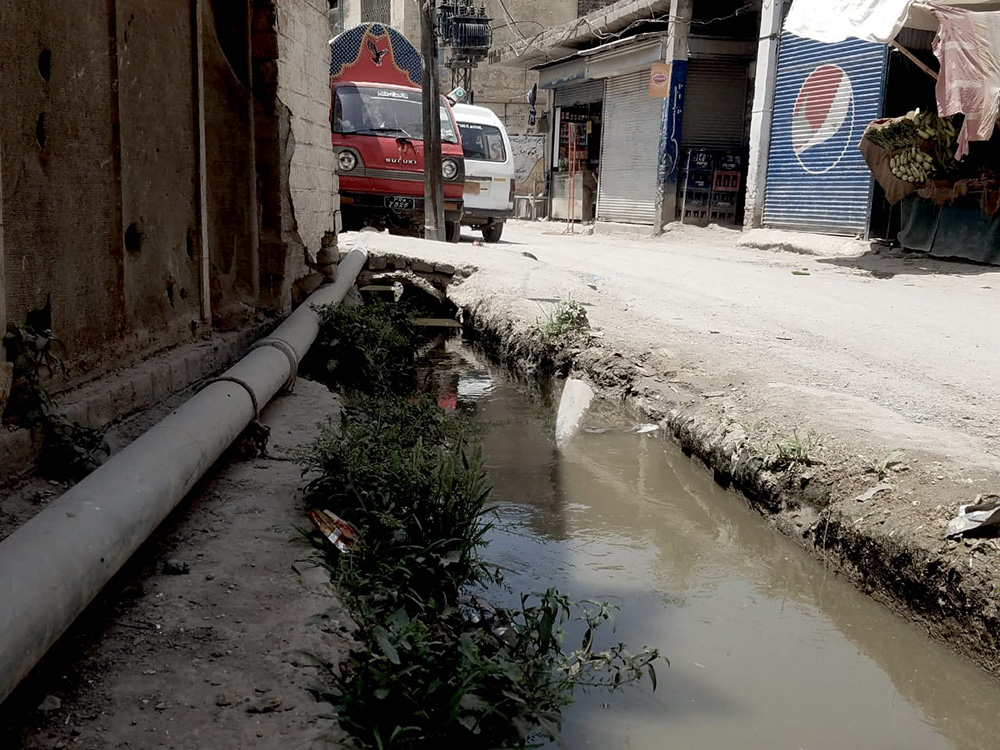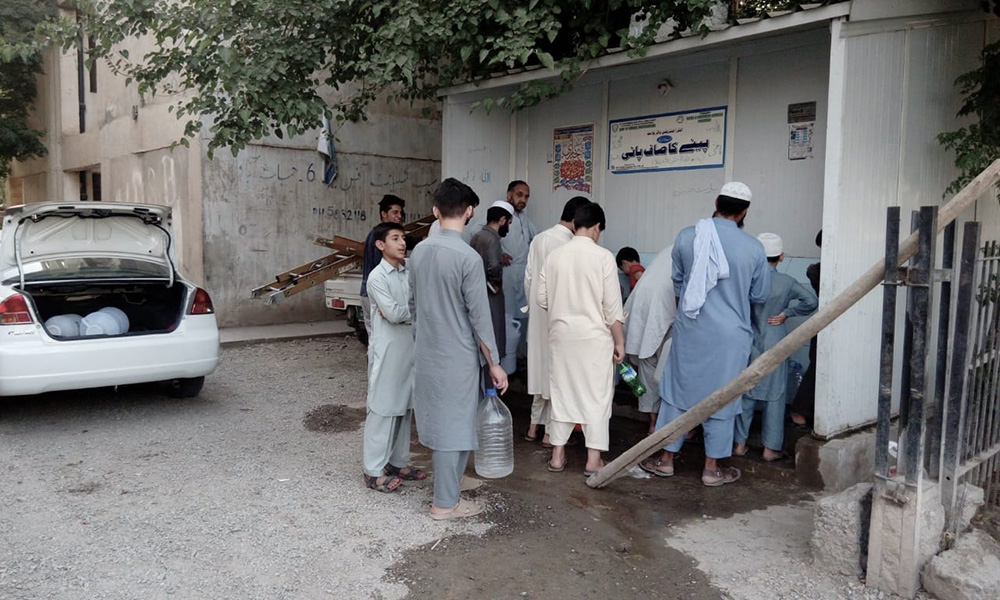Iftikhar Ahmed, who lives on Peshawar’s Dilzak Road, has always drawn water from a hand-dug well in his home. Three years ago, this water source ran dry. They called a plumber to have the problem fixed. But he couldn’t do anything. Instead, he told them the entire neighbourhood was suffering from dried up aquifers. One possible solution would be to drill a deeper borewell, but the plumber offered no guarantee that the further effort would lead to water.
Ahmed had no other choice but to rely on the government’s tubewell to stock up on a weekly supply of water. As for drinking, he is forced to buy cartons of expensive bottled water. “The water provided by the government is not suitable for drinking,” he tells Geo.tv, “Often water pipes pass alongside sewage lines, which can mix up. There have been times when our tap water stank of sewage.”

Across most of Peshawar, iron pipes that carry drinking water are old or run parallel to conduits for sewer and rainwater. Many of these lines, laid down decades ago, are prone to crack, break and corrode. Few, if any, have been recently replaced.
Peshawar is the capital of the Khyber Pakhtunkhwa province. According to the 2017 population census, it has close to two million people, most of whom have few options for clean drinking water.
A source in the health department of KP says that an estimated 54 per cent of the province’s residents are suffering from water-borne diseases. Peshawar’s water has an excess level of calcium and magnesium. One reason for this is that the city’s water is extracted from groundwater, which is abundant in both.
The two chemicals, when consumed in large quantity, causes hair loss and gastroenteritis, an infection that causes diarrhoea and vomiting. Another concern is that the province’s water supply is imbued with different kinds of salts. For example, in Khyber Agency, there is a more than normal level of fluoride, while in DI Khan, there is substantial amounts of sodium which can affect blood pressure. This is worrying since according to a report by the United Nations, contaminated water contributes to 40 per cent of annual deaths in Pakistan.
Hard water, which has a high mineral content, is being used in most areas of KP and the tribal belt, according to experts at the government-run Pakistan Council of Scientific and Industrial Research (PCSIR), KP.
Further compounding the issue is the rapid decline in the city’s groundwater. Imran Ayyaz, who lives in Peshawar’s Officer Colony, says when he first moved into his house in 2011, they could dig a well only 15 feet deep and pull out water. Now, the well is 40 feet deep. The drop in the water levels can be attributed to the increase in population and consumption. “If this is not addressed immediately, KP will have a severe water crisis in just 15 years,” Dr Jahangir Shah from the PCSIR tells Geo.tv. Shah has chalked out a comprehensive plan that could help the federal and provincial government plan in advance. He suggests geotagging areas in Peshawar to set up water reservoirs and to build more water tanks to store rainwater.
Meanwhile, the central government has repeatedly claimed that it would bring more water flow from the Warsak Dam, built on the Kabul River, to facilitate the people of Peshawar. But work on its third and final phase is still ongoing. And even if this supply comes through, the water will need to be treated for it to be drinkable, which means the federal government will need to allocate additional money. Till then, no one in KP seems to have any answers to the province’s looming water woes.





